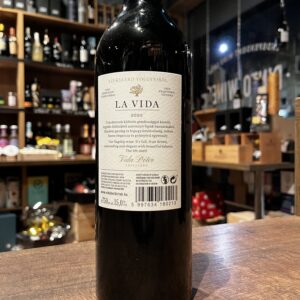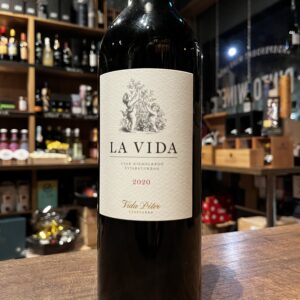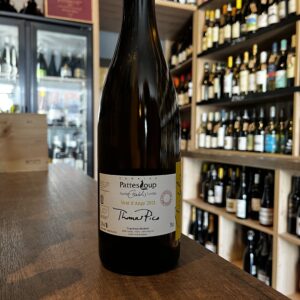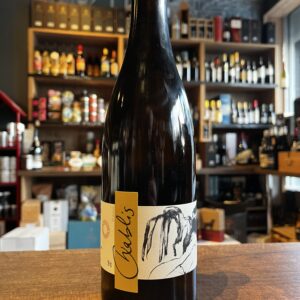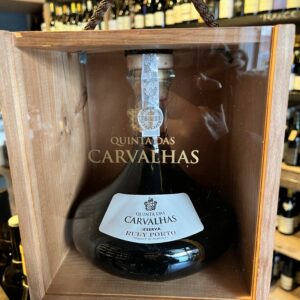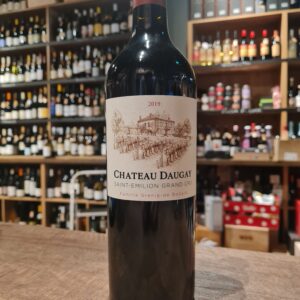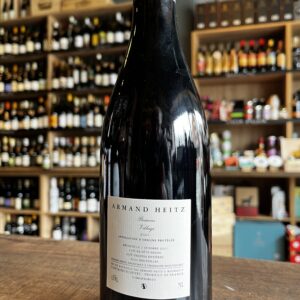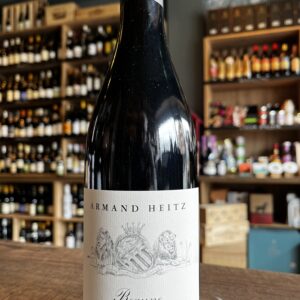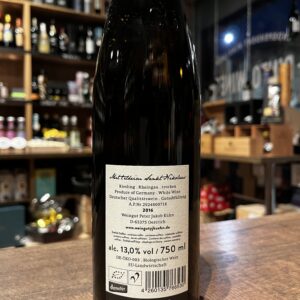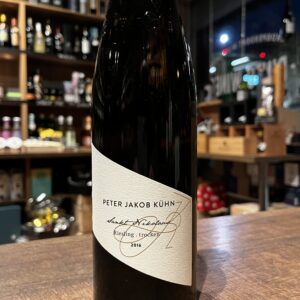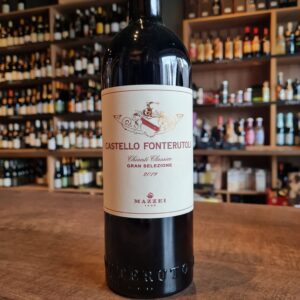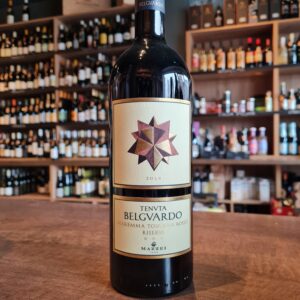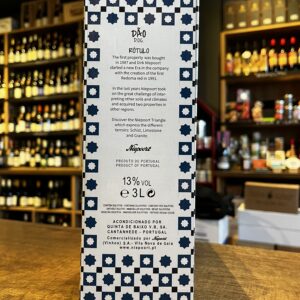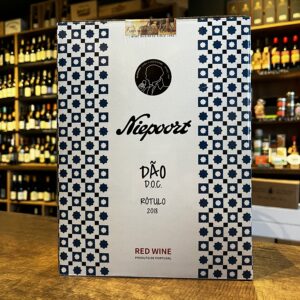-
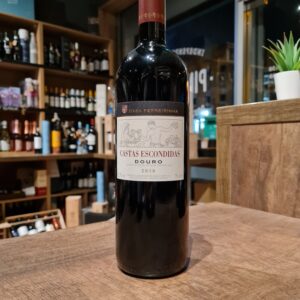 Is with wines like this one that you start uncovering the great potential of Douro wines. 'Castas Escondidas' translates as 'hidden varieties' and showcases old-vines, field-blend fruit and some of the lesser known grape varieties of the Douro Valley. What makes this drop a superior wine is not only the great quality of the terroir, region characteristics, the field blend vines used but most importantly the high intervention from skilled winemakers producing this wine. With all of these movements happening which by all means are fantastic such as natural wines, low intervention and so on, memories can be short and people will have some tendency to forget that winemakers spent hundreds of years studying the production of wine going by the scientific name of oenology and therefore they are oenologists with the main purpose being interventionists in every single process of the wine production!!! oh dear, I feel I am opening a can of worms here... As the magician himself describes “Casa Ferreirinha Castas Escondidas was designed to stage the varieties commonly used in batches of Port Wine, but rarely explored and which result in a perfect combination with other more well-known varieties” , says Luís Sottomayor, the winemaker responsible for Sogrape wines in the Douro. . “The small percentage of grapes harvested from old vines gives even more special characteristics to the final batch” Great with for special occasions, quality red meats and cheeses. Be responsible and drink this wine moderately as it is one of a kind
Is with wines like this one that you start uncovering the great potential of Douro wines. 'Castas Escondidas' translates as 'hidden varieties' and showcases old-vines, field-blend fruit and some of the lesser known grape varieties of the Douro Valley. What makes this drop a superior wine is not only the great quality of the terroir, region characteristics, the field blend vines used but most importantly the high intervention from skilled winemakers producing this wine. With all of these movements happening which by all means are fantastic such as natural wines, low intervention and so on, memories can be short and people will have some tendency to forget that winemakers spent hundreds of years studying the production of wine going by the scientific name of oenology and therefore they are oenologists with the main purpose being interventionists in every single process of the wine production!!! oh dear, I feel I am opening a can of worms here... As the magician himself describes “Casa Ferreirinha Castas Escondidas was designed to stage the varieties commonly used in batches of Port Wine, but rarely explored and which result in a perfect combination with other more well-known varieties” , says Luís Sottomayor, the winemaker responsible for Sogrape wines in the Douro. . “The small percentage of grapes harvested from old vines gives even more special characteristics to the final batch” Great with for special occasions, quality red meats and cheeses. Be responsible and drink this wine moderately as it is one of a kind -

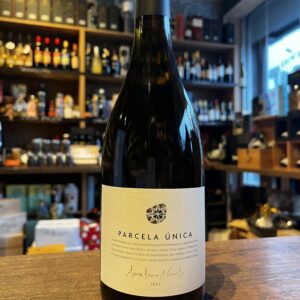 Born in Monção in Portugal’s Vinho Verde region, Anselmo Mendes fell in love with the Alvarinho grape at an early age and began making his first wines from the variety in 1988. Over the years he has consulted for many of Portugal’s top wineries and he also makes his own wines in Minho close to the border with Spain. Anselmo uses his decades of experience of working with Alvarinho to create a range of styles from crisp, light-bodied expressions to richer wines which are fermented and aged in oak barrels. A very versatile wine, it can be paired with stronger meat dishes or more complex fish, as well as shellfish and crustaceans. In the company of almond crusted cod on a bed of mashed potatoes or lamb chops with rosemary, Parcela Única wine in perfect harmony enhances fantastic flavors. Should be served between 11-13ºC. Technical sheet
Born in Monção in Portugal’s Vinho Verde region, Anselmo Mendes fell in love with the Alvarinho grape at an early age and began making his first wines from the variety in 1988. Over the years he has consulted for many of Portugal’s top wineries and he also makes his own wines in Minho close to the border with Spain. Anselmo uses his decades of experience of working with Alvarinho to create a range of styles from crisp, light-bodied expressions to richer wines which are fermented and aged in oak barrels. A very versatile wine, it can be paired with stronger meat dishes or more complex fish, as well as shellfish and crustaceans. In the company of almond crusted cod on a bed of mashed potatoes or lamb chops with rosemary, Parcela Única wine in perfect harmony enhances fantastic flavors. Should be served between 11-13ºC. Technical sheet -
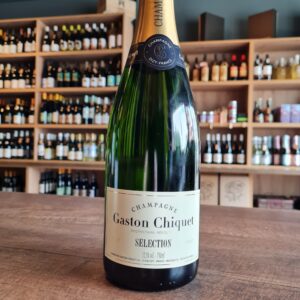 The Champagne grower-producer Gaston Chiquet has made a name for itself as one of the best. In a region with thousands of small producers, it is a credit to owners Antoine and Nicolas Chiquet. Based in the evocatively named Dizy, the family first planted vines in 1746 but did not produce Champagne until 1935, when brothers Ferdinand and Gaston Chiquet took the bold step of setting up their own label, rather than merely selling grapes to the larger houses. Today they produce 15,000 cases a year. This is a classic aperitif Champagne. Deliciously light, crisp citrus and apple orchard flavours mingle with sundry red-berried fruit. It is beautifully plumped out in the middle, courtesy of Premier Cru Pinot Noir fruit from the evocatively named village of Dizy, ending with delicate toasty notes.
The Champagne grower-producer Gaston Chiquet has made a name for itself as one of the best. In a region with thousands of small producers, it is a credit to owners Antoine and Nicolas Chiquet. Based in the evocatively named Dizy, the family first planted vines in 1746 but did not produce Champagne until 1935, when brothers Ferdinand and Gaston Chiquet took the bold step of setting up their own label, rather than merely selling grapes to the larger houses. Today they produce 15,000 cases a year. This is a classic aperitif Champagne. Deliciously light, crisp citrus and apple orchard flavours mingle with sundry red-berried fruit. It is beautifully plumped out in the middle, courtesy of Premier Cru Pinot Noir fruit from the evocatively named village of Dizy, ending with delicate toasty notes. -
Out of stock
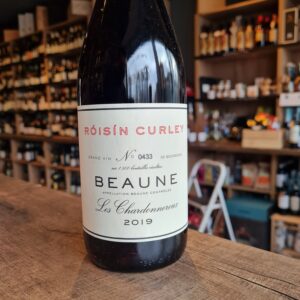 Roisín Curley is an Irish winemaker making a very small production of wines in Burgundy. Using her scientific background - Pharmacy, her wine-knowledge, her experience (Château Latour and Château Grillet), and her love for wine, she produces outstanding wines from one of the most sought after wine region - Burgundy. Roisin buys grapes from friends and neighbour in Burgundy with a preference for organicaly grown fruits. She shares with these producer the same vision - quality over quantity. Roisin Curley produces elegant and refined wines that truly express the terroir and the grape variety.
Roisín Curley is an Irish winemaker making a very small production of wines in Burgundy. Using her scientific background - Pharmacy, her wine-knowledge, her experience (Château Latour and Château Grillet), and her love for wine, she produces outstanding wines from one of the most sought after wine region - Burgundy. Roisin buys grapes from friends and neighbour in Burgundy with a preference for organicaly grown fruits. She shares with these producer the same vision - quality over quantity. Roisin Curley produces elegant and refined wines that truly express the terroir and the grape variety. -
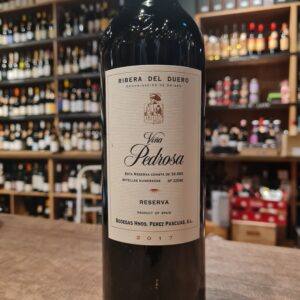 Bodegas Hnos. Perez Pascuas is a winery founded in 1980 and located in Pedrosa de Duero. In its vineyards, Tinta del País or Tempranillo predominate, and they also have a little Cabernet Sauvignon. They produce around 500,000 bottles. They also have a large collection of 3,000 barrels. The barrels are renewed every 3 years to maintain the contribution of compounds from the wood, and the toasted elements that characterise the style of the winery. Viña Pedrosa Reserva is an iconic wine from Pedrosa de Duero. A complex, powerful and highly expressive wine
Bodegas Hnos. Perez Pascuas is a winery founded in 1980 and located in Pedrosa de Duero. In its vineyards, Tinta del País or Tempranillo predominate, and they also have a little Cabernet Sauvignon. They produce around 500,000 bottles. They also have a large collection of 3,000 barrels. The barrels are renewed every 3 years to maintain the contribution of compounds from the wood, and the toasted elements that characterise the style of the winery. Viña Pedrosa Reserva is an iconic wine from Pedrosa de Duero. A complex, powerful and highly expressive wine -
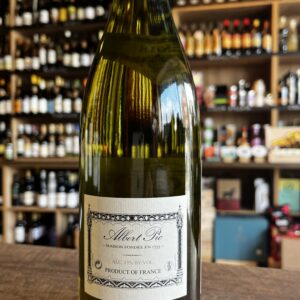
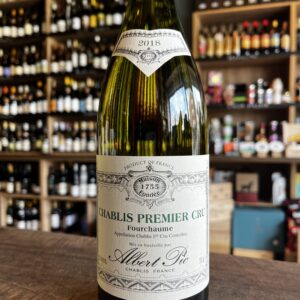 The maison Albert Pic et Fils was founded in 1755. The company is now owned by Baron Patrick de Ladoucette. Made from 100% Chardonnay grapes, this wine from Maison Albert Pic is a Chablis that comes from the central-eastern French region of Burgundy, on soils of Kimmeridgian origin with a low percentage of clay and marl. The vines are located in one of the seven Grand Crus with the appellation. Pair it white meats, blue cheeses but especially fish dishes. Serve at a temperature of 10-12°C in a wide goblet
The maison Albert Pic et Fils was founded in 1755. The company is now owned by Baron Patrick de Ladoucette. Made from 100% Chardonnay grapes, this wine from Maison Albert Pic is a Chablis that comes from the central-eastern French region of Burgundy, on soils of Kimmeridgian origin with a low percentage of clay and marl. The vines are located in one of the seven Grand Crus with the appellation. Pair it white meats, blue cheeses but especially fish dishes. Serve at a temperature of 10-12°C in a wide goblet -
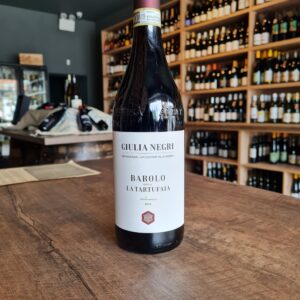 Giulia Negri is a young talent that goes by the nickname "Barolo girl" in the wine world. The grapes for this archetype of a modern-traditional Barolo come from the top vineyards Brunate and Serradenari, the latter is located at an altitude of up to 520 m, and the soils are clayey-sandy. It is an area with a particularly cool and breezy microclimate, which is reflected in the elegant profile of the wines. Climbing towards the top of the hill, the soils become increasingly rich in sandy veins and limestone marl, which contribute to giving Barolo an extreme expressive refinement. The high quality grapes, a work in the cellar that is very respectful of the raw material and aimed at enhancing the typical characteristics of the terroir, allow the creation of a Barolo faithful to the land of origin. Dressed to impress, savory red with a fine fragrance on the palate that doesn't deny its origin and the grape variety, it is of an almost unique elegance and freshness that allows it to be identified as a lively and completely complete top wine even when young. Further years of maturity are certainly not a mistake, because one feels impressively how the complexity increasing with the age joins the finesse and elegance already unmistakable today. One bottle for now and don't put the rest too far away in the cellar, please!
Giulia Negri is a young talent that goes by the nickname "Barolo girl" in the wine world. The grapes for this archetype of a modern-traditional Barolo come from the top vineyards Brunate and Serradenari, the latter is located at an altitude of up to 520 m, and the soils are clayey-sandy. It is an area with a particularly cool and breezy microclimate, which is reflected in the elegant profile of the wines. Climbing towards the top of the hill, the soils become increasingly rich in sandy veins and limestone marl, which contribute to giving Barolo an extreme expressive refinement. The high quality grapes, a work in the cellar that is very respectful of the raw material and aimed at enhancing the typical characteristics of the terroir, allow the creation of a Barolo faithful to the land of origin. Dressed to impress, savory red with a fine fragrance on the palate that doesn't deny its origin and the grape variety, it is of an almost unique elegance and freshness that allows it to be identified as a lively and completely complete top wine even when young. Further years of maturity are certainly not a mistake, because one feels impressively how the complexity increasing with the age joins the finesse and elegance already unmistakable today. One bottle for now and don't put the rest too far away in the cellar, please! -
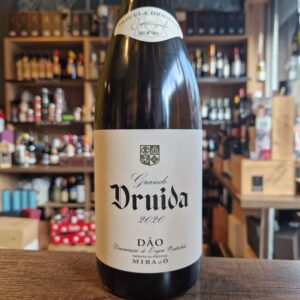 Nuno Mira do Ó is a one-man viticulture and enology powerhouse. A deep-thinking, well-traveled, generous person totally focused on expressing the great terroir of his native country. His peers look his way for guidance because his experience bringing forth wines of place covers almost every major wine region in Portugal. He launched his eponymous brand in the Dão wine region with Druida Encruzado. The wine is named for the ancient Celtic druids whose connection to the earth and plants drove their quest to achieve spiritual equilibrium through the balance of nature. As an enologist and viticulturist, Nuno is in constant search for balance between the soil, the climate, and the vines. Mira do Ó wines seek to attain perfect sensory balance with the utmost respect for nature. This is a pursuit driven by passion and a desire to share wines filled with freshness, elegance, and aging potential. These wines are handcrafted in the Dão from indigenous varietals with vineyards in granite soil sitting above 500 meters of elevation to capture the region’s cool climate. Store the bottles lying down in a cool place (15-17ºC). Drink at 11-12º C and pair with fine food.
Nuno Mira do Ó is a one-man viticulture and enology powerhouse. A deep-thinking, well-traveled, generous person totally focused on expressing the great terroir of his native country. His peers look his way for guidance because his experience bringing forth wines of place covers almost every major wine region in Portugal. He launched his eponymous brand in the Dão wine region with Druida Encruzado. The wine is named for the ancient Celtic druids whose connection to the earth and plants drove their quest to achieve spiritual equilibrium through the balance of nature. As an enologist and viticulturist, Nuno is in constant search for balance between the soil, the climate, and the vines. Mira do Ó wines seek to attain perfect sensory balance with the utmost respect for nature. This is a pursuit driven by passion and a desire to share wines filled with freshness, elegance, and aging potential. These wines are handcrafted in the Dão from indigenous varietals with vineyards in granite soil sitting above 500 meters of elevation to capture the region’s cool climate. Store the bottles lying down in a cool place (15-17ºC). Drink at 11-12º C and pair with fine food. -
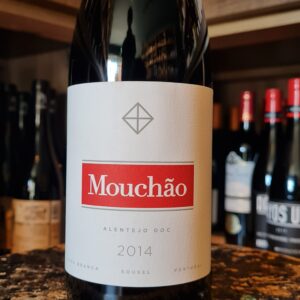 Herdade do Mouchao is a historic winery in Portugal’s Alentejo region that specialises in producing excellent red wines from the local Alicante Bouschet grape. The estate’s roots date back to the 19th century when Thomas Reynolds first moved from Porto to Alentejo to enter the prosperous cork-making industry. Later his grandson, John Reynolds saw an opportunity to start making both wine and corks and purchased the 900 hectare Herdade do Mouchao estate. Vineyards were planted, in 1901 he built a high-ceilinged adobe winery (or “adega”) and a distillery was added to the winery in 1929, where until today Mouchão's pommace brandy is produced. Unfortunately the estate was seized in 1974 by order of the powerful military government ruling the country at the time. The Reynolds were only able to regain the estate in 1985 and today the family works around 38 hectares of vines. Today, the Herdade do Mouchão continues to be run by the descendants of the original family whose cellar and vineyard workers have been with them for generations. The process is, as it always has been, unhurried (There is alway Manana). The grape varieties are local, picked by hand and foot-trodden. In the ever-changing world of winemaking, Herdade do Mouchão, remains a traditional, family-run winery.
Herdade do Mouchao is a historic winery in Portugal’s Alentejo region that specialises in producing excellent red wines from the local Alicante Bouschet grape. The estate’s roots date back to the 19th century when Thomas Reynolds first moved from Porto to Alentejo to enter the prosperous cork-making industry. Later his grandson, John Reynolds saw an opportunity to start making both wine and corks and purchased the 900 hectare Herdade do Mouchao estate. Vineyards were planted, in 1901 he built a high-ceilinged adobe winery (or “adega”) and a distillery was added to the winery in 1929, where until today Mouchão's pommace brandy is produced. Unfortunately the estate was seized in 1974 by order of the powerful military government ruling the country at the time. The Reynolds were only able to regain the estate in 1985 and today the family works around 38 hectares of vines. Today, the Herdade do Mouchão continues to be run by the descendants of the original family whose cellar and vineyard workers have been with them for generations. The process is, as it always has been, unhurried (There is alway Manana). The grape varieties are local, picked by hand and foot-trodden. In the ever-changing world of winemaking, Herdade do Mouchão, remains a traditional, family-run winery. -
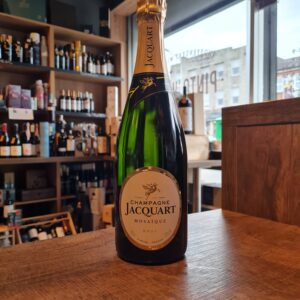 The vineyards cultivated by Jacquart winemakers cover 2,400 ha spread over sixty crus, that is to say, sixty villages throughout the Champagne area – what a mosaic! It’s within this large range of sites in Champagne that their winemaker draws together the different shades through careful assemblage, creating a cuvée that is ethereal and which seduces lovers of JACQUART. Brut Mosaïque is a wine for all times, sharing the pleasures of daily life, celebrating good news, and friends that pop round unexpectedly – this is the champagne you always have in the fridge. «Our Brut Mosaïque elegantly shows the uniqueness of our style, expressing the result of selection and choices without compromise.» Floriane Eznack THE FACTS A blend where Chardonnay is the dominant grape variety (35%-40%), giving Brut Mosaïque its freshness and delicate aromas. Pinot Noir (30%-35%) adds structure and Pinot Meunier (25% -30%) brings fruit.The grapes are sourced from exceptional terroirs, including the Grands Crus of the Côte des Blancs and the Montagne de Reims. The presence of 25% reserve wine ensures regularity of style, while more than three years ageing and a light dosage of 10 g/l result in a balanced and complex champagne. There is a time and place for this bubbly and that is anytime and everywhere! Day or night, as an aperitif or with fish or cheese. For a special occasion or for sharing with friends, Brut Mosaïque makes the moment.
The vineyards cultivated by Jacquart winemakers cover 2,400 ha spread over sixty crus, that is to say, sixty villages throughout the Champagne area – what a mosaic! It’s within this large range of sites in Champagne that their winemaker draws together the different shades through careful assemblage, creating a cuvée that is ethereal and which seduces lovers of JACQUART. Brut Mosaïque is a wine for all times, sharing the pleasures of daily life, celebrating good news, and friends that pop round unexpectedly – this is the champagne you always have in the fridge. «Our Brut Mosaïque elegantly shows the uniqueness of our style, expressing the result of selection and choices without compromise.» Floriane Eznack THE FACTS A blend where Chardonnay is the dominant grape variety (35%-40%), giving Brut Mosaïque its freshness and delicate aromas. Pinot Noir (30%-35%) adds structure and Pinot Meunier (25% -30%) brings fruit.The grapes are sourced from exceptional terroirs, including the Grands Crus of the Côte des Blancs and the Montagne de Reims. The presence of 25% reserve wine ensures regularity of style, while more than three years ageing and a light dosage of 10 g/l result in a balanced and complex champagne. There is a time and place for this bubbly and that is anytime and everywhere! Day or night, as an aperitif or with fish or cheese. For a special occasion or for sharing with friends, Brut Mosaïque makes the moment. -
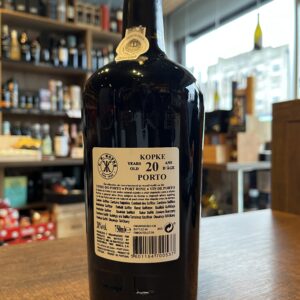
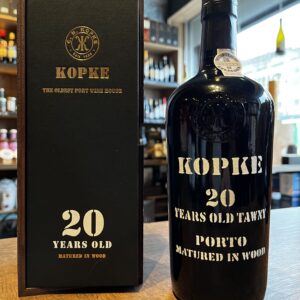 Kopke, a house specialising in aged tawny and aged white ports, is the oldest established port producer, in existence since 1638. There are special places in the world. Kopke found one of them. Quinta de São Luiz is located on the left bank of the river Douro, near Pinhão, in the parish of Tabuaço. It is an imposing estate, considered one of the most emblematic of the Douro region. The Quinta has gone through two major changes: on the one hand, the construction of the Bagaúste dam, with the consequent rise of the water level and the loss of vineyard land; on the other, the enlargement of the total area with the acquisition of several other properties in the area. The estate is made up of 125 hectares, 90 of which are planted with vines. The main grape varieties grown here are Touriga Nacional, Touriga Franca, Tinta Roriz, Tinta Cão. There are also small plots of Tinta Barroca and Souzão. The vines are classified as A, the highest grade in the Demarcated Region of the Douro. Irresistible with a starter of foie gras with aubergine and walnuts. A great choice for an endless array of desserts, such as toffee brownies, chocolate and pistachio pavé, or crostini of walnuts with chèvre. When teh weather picks up or the height of the Summer, serving this Port slightly chilly is a must.
Kopke, a house specialising in aged tawny and aged white ports, is the oldest established port producer, in existence since 1638. There are special places in the world. Kopke found one of them. Quinta de São Luiz is located on the left bank of the river Douro, near Pinhão, in the parish of Tabuaço. It is an imposing estate, considered one of the most emblematic of the Douro region. The Quinta has gone through two major changes: on the one hand, the construction of the Bagaúste dam, with the consequent rise of the water level and the loss of vineyard land; on the other, the enlargement of the total area with the acquisition of several other properties in the area. The estate is made up of 125 hectares, 90 of which are planted with vines. The main grape varieties grown here are Touriga Nacional, Touriga Franca, Tinta Roriz, Tinta Cão. There are also small plots of Tinta Barroca and Souzão. The vines are classified as A, the highest grade in the Demarcated Region of the Douro. Irresistible with a starter of foie gras with aubergine and walnuts. A great choice for an endless array of desserts, such as toffee brownies, chocolate and pistachio pavé, or crostini of walnuts with chèvre. When teh weather picks up or the height of the Summer, serving this Port slightly chilly is a must. -
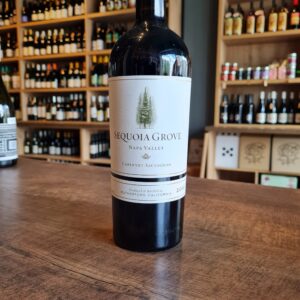 Family-owned winery Sequoia Grove was founded in 1979 in a 110-year old barn beneath a grove of Sequoia trees in Rutherford. Michael Trujillo joined the winery as assistant winemaker in 1981, becoming director of winemaking in 2002. His philosophy is based on balance in the vineyard, planting different blocks with different clones, and farming without pesticides. The family have been working with their partner growers for decades which gives them access to the very best quality fruit each year and allows them to create this complex wine which truly expresses the Rutherford terroir. The young wine is aged in oak barrel for 20 months which adds sweet spice notes and extra complexity to the finished bottling. The rich, powerful flavor profile makes this a winner with lovers of big, bold reds and a great match for red meats. Drink now through to 2030. Decanting is always recommended but is not a must
Family-owned winery Sequoia Grove was founded in 1979 in a 110-year old barn beneath a grove of Sequoia trees in Rutherford. Michael Trujillo joined the winery as assistant winemaker in 1981, becoming director of winemaking in 2002. His philosophy is based on balance in the vineyard, planting different blocks with different clones, and farming without pesticides. The family have been working with their partner growers for decades which gives them access to the very best quality fruit each year and allows them to create this complex wine which truly expresses the Rutherford terroir. The young wine is aged in oak barrel for 20 months which adds sweet spice notes and extra complexity to the finished bottling. The rich, powerful flavor profile makes this a winner with lovers of big, bold reds and a great match for red meats. Drink now through to 2030. Decanting is always recommended but is not a must -
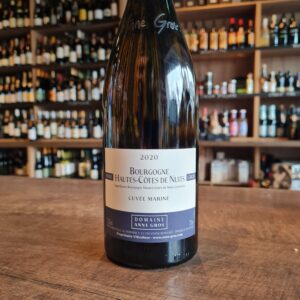 Anne Gros, the only daughter of François Gros, has established a solid character and reputation in the wine world after taking over her father’s domaine in 1988. At 25 years old, Anne saw the family domaine grow from 7 to 16 acres. Recently, she invested in a new cellar. She is a winegrower suspicious of certitude and fastidious about maintaining her freedom. As a woman winegrower, Anne knew how to prove herself and convince all who doubted of her ability to manage a domaine. She showed that she had not only the shoulders but the head to make her family heritage one of the greatest domaines of Burgundy. In 1984 she had to stop studying Arts to study vines’culture and oenology in Beaune and Dijon. Now her passion for vine and wine as well as her talent, sensitivity and professionalism posit her as a winemaker enthusiasts can rely on. Anne Gros has always been concerned about the environment, however she did not always find what she was looking for. so with this conviction, Anne Gros continued her approach to ecology without the recognition of organic certification The first harvest of this wine was 1999, Now the vines are mature and bringing very expressive fruit. This 4 acre single block parcel is situated in the commune of Concoeur just above the village of Vosne-Romanée. Originally bare of any vines, it was planted in stages (1996, 1997 and 1998). Chardonnay vines make up 2.4 acres on the upper part of the slope, where the earth is deeper and more humid (this is where the water of the hillside resurges). On the land itself: is an area rarely exceeding 300 metres in altitude in the west. the geographical diversity of burgundy leads to a diversity of climates and the existence of numerous micro-climates. the average annual insolation is 2000 hours, the average temperature is 11.5 degrees celsius. the côte de nuits is carved out of jurassic limestone. as its name suggests, the côte has a fairly steep slope. the clay-limestone complexes, the different sun exposures and the climatic data resulting from the shaping of the combes perpendicular to the fault line of the coast give us a very fragmented pdo classification system. Highly recommended with raw or grilled fish, shellfish in a court-bouillon, white meat, charcuterie without garlic and goat cheese. Fantastic Burgundy and not easy to find due to its limit production. Try it while you can
Anne Gros, the only daughter of François Gros, has established a solid character and reputation in the wine world after taking over her father’s domaine in 1988. At 25 years old, Anne saw the family domaine grow from 7 to 16 acres. Recently, she invested in a new cellar. She is a winegrower suspicious of certitude and fastidious about maintaining her freedom. As a woman winegrower, Anne knew how to prove herself and convince all who doubted of her ability to manage a domaine. She showed that she had not only the shoulders but the head to make her family heritage one of the greatest domaines of Burgundy. In 1984 she had to stop studying Arts to study vines’culture and oenology in Beaune and Dijon. Now her passion for vine and wine as well as her talent, sensitivity and professionalism posit her as a winemaker enthusiasts can rely on. Anne Gros has always been concerned about the environment, however she did not always find what she was looking for. so with this conviction, Anne Gros continued her approach to ecology without the recognition of organic certification The first harvest of this wine was 1999, Now the vines are mature and bringing very expressive fruit. This 4 acre single block parcel is situated in the commune of Concoeur just above the village of Vosne-Romanée. Originally bare of any vines, it was planted in stages (1996, 1997 and 1998). Chardonnay vines make up 2.4 acres on the upper part of the slope, where the earth is deeper and more humid (this is where the water of the hillside resurges). On the land itself: is an area rarely exceeding 300 metres in altitude in the west. the geographical diversity of burgundy leads to a diversity of climates and the existence of numerous micro-climates. the average annual insolation is 2000 hours, the average temperature is 11.5 degrees celsius. the côte de nuits is carved out of jurassic limestone. as its name suggests, the côte has a fairly steep slope. the clay-limestone complexes, the different sun exposures and the climatic data resulting from the shaping of the combes perpendicular to the fault line of the coast give us a very fragmented pdo classification system. Highly recommended with raw or grilled fish, shellfish in a court-bouillon, white meat, charcuterie without garlic and goat cheese. Fantastic Burgundy and not easy to find due to its limit production. Try it while you can -
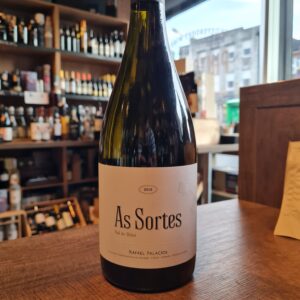 Rafael Palacios is the son of D. José Palacios Remondo (founder of Bodegas Palacios Remondo) and the brother of Alvaro Palacios(Priorat) but ultimately a passionate producer of white wine. After producing his first white at the family-run winery, called Plácet, he decided to set up his own winery in Galicia, in the Valle del Bibei, under the Valdeorras denomination. Established in 2004, Rafael Palacios has rapidly become one of Spain’s greatest producers of white wine. His focus is on the local variety Godello, grown in a small estate on very old vines that are up to 90 years old from the areas steep-sided, terraced vineyards and have been cultivated with respect of the land, without using any type of herbicide or pesticide. Rafael Palacios is refining his work year after year, reaching the magic of the greatest wines. A top wine, and one to keep. Grub pairing suggestions are mild Asian dishes, Moroccan specialities, fish ragout with saffron sauce Risotto ai frutti di mar
Rafael Palacios is the son of D. José Palacios Remondo (founder of Bodegas Palacios Remondo) and the brother of Alvaro Palacios(Priorat) but ultimately a passionate producer of white wine. After producing his first white at the family-run winery, called Plácet, he decided to set up his own winery in Galicia, in the Valle del Bibei, under the Valdeorras denomination. Established in 2004, Rafael Palacios has rapidly become one of Spain’s greatest producers of white wine. His focus is on the local variety Godello, grown in a small estate on very old vines that are up to 90 years old from the areas steep-sided, terraced vineyards and have been cultivated with respect of the land, without using any type of herbicide or pesticide. Rafael Palacios is refining his work year after year, reaching the magic of the greatest wines. A top wine, and one to keep. Grub pairing suggestions are mild Asian dishes, Moroccan specialities, fish ragout with saffron sauce Risotto ai frutti di mar -
Out of stock
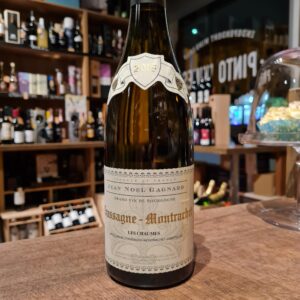 This famous Domaine has been run by Caroline Lestimé, Jean-Noël’s daughter, since 1989. Its 12.5 hectares of outstanding vineyards have been certified organic since 2014, and are now run biodynamically, though are not yet certified as such. Most of the estate’s vineyards are in the heart of Chassagne, with one vineyard in the Hautes Côtes de Beaune, which looks down on St. Aubin and was planted in 2015 at an altitude of 300 metres above sea level. The vines are Guyot-trained and planted on a moderate hill facing east. The soils here are stony calcareous clays which are enriched with biodynamic composts at the end of every winter. The wines are, in the best sense of the phrase, ‘low intervention’ wines, with each expressing the character of its site. The 2018 vintage started with good levels of winter rainfall, replenishing the soil moisture content. After a cold February and a rainy March, conditions in April were warm and dry, allowing the vineyard growth to catch up after the earlier delays. Flowering occurred under perfect conditions and summer brought consistently warm, sunny days through to harvest, which took place on August 26th. Grapes for this wine come from two similar plots: one parcel is in the upper part of the appellation (just under the road to Santenay) and the other on the lower part. 40 year old Vines Approximately 200 cases of this cuvée are made each year. Great wine to be appreciated. being an elegant and with layers of structure making this wine quite exquisite. Decanter highly recommended here.
This famous Domaine has been run by Caroline Lestimé, Jean-Noël’s daughter, since 1989. Its 12.5 hectares of outstanding vineyards have been certified organic since 2014, and are now run biodynamically, though are not yet certified as such. Most of the estate’s vineyards are in the heart of Chassagne, with one vineyard in the Hautes Côtes de Beaune, which looks down on St. Aubin and was planted in 2015 at an altitude of 300 metres above sea level. The vines are Guyot-trained and planted on a moderate hill facing east. The soils here are stony calcareous clays which are enriched with biodynamic composts at the end of every winter. The wines are, in the best sense of the phrase, ‘low intervention’ wines, with each expressing the character of its site. The 2018 vintage started with good levels of winter rainfall, replenishing the soil moisture content. After a cold February and a rainy March, conditions in April were warm and dry, allowing the vineyard growth to catch up after the earlier delays. Flowering occurred under perfect conditions and summer brought consistently warm, sunny days through to harvest, which took place on August 26th. Grapes for this wine come from two similar plots: one parcel is in the upper part of the appellation (just under the road to Santenay) and the other on the lower part. 40 year old Vines Approximately 200 cases of this cuvée are made each year. Great wine to be appreciated. being an elegant and with layers of structure making this wine quite exquisite. Decanter highly recommended here.


